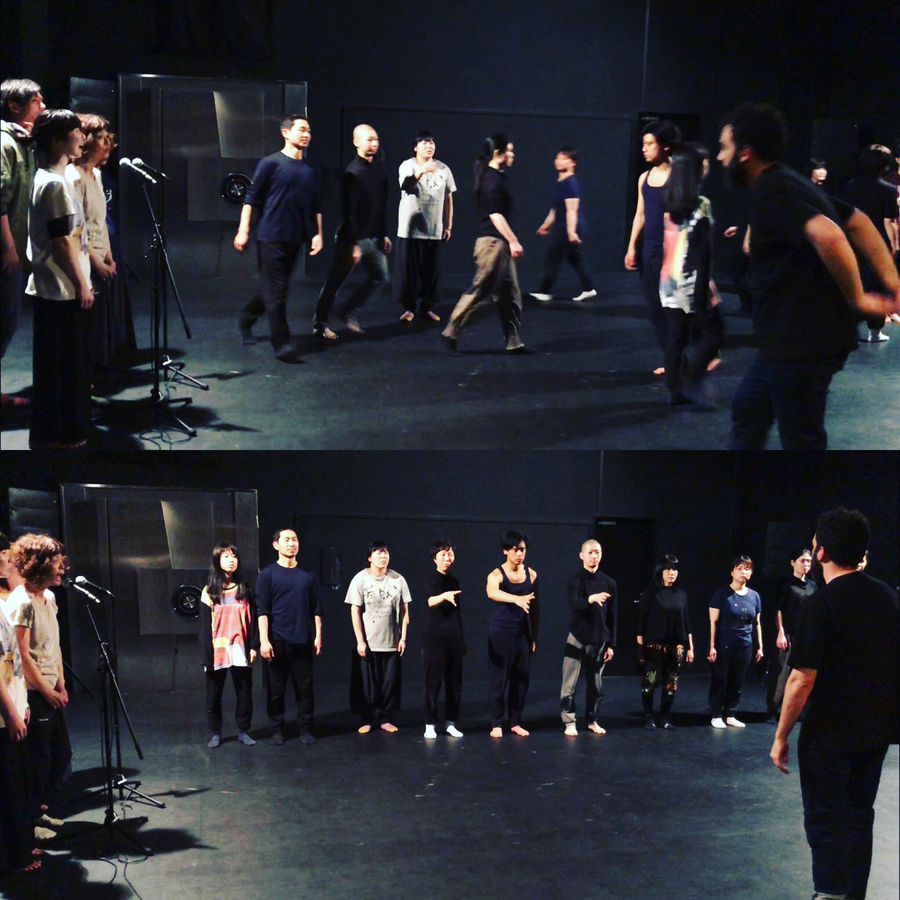SOUNDPAINTING
Soundpainting is a universal multidisciplinary live composing sign language for musicians, actors, dancers, and visual Artists.
The language comprises more than 1200 gestures that are signed by the Soundpainter (composer) to indicate the type of material desired of the performers.
The creation of the composition is realized, by the Soundpainter, through the parameters of each set of signed gestures.
Analysis
The Soundpainter (the composer) standing in front (usually) of the group communicates a series of signs using hand and body gestures indicating specific and/or aleatoric material to be performed by the group. The Soundpainter develops the responses of the performers, molding and shaping them into the composition then signs another series of gestures, a phrase, and continues in this process of composing the piece.
The Soundpainter composes in real time utilizing the gestures to create the composition in any way they desire. The Soundpainter sometimes knows what he/she will receive from the performers and sometimes does not know what he/she will receive – the elements of specificity and chance. The Soundpainter composes with what happens in the moment, whether expected or not. The ability to compose with what happens in the moment, in real time, is what is required in order to attain a high level of fluency with the Soundpainting language.
The gestures of the Soundpainting language are signed using the syntax of Who, What, How and When. There are many types of gestures, some indicating specific material to be performed as well as others indicating specific styles, genres, aleatoric concepts, improvisation, disciplines, stage positions, costumes, props, and many others.
The Soundpainting language was created by Walter Thompson in Woodstock, New York in 1974. Arnau Millà is certified as a Soundpainting teacher directly by Walter Thompson and member of the Think Tank, discussion forum and an annual conference organized for the development of the Soundpainting language.
______________________
Texts taken from the official soundpainting web
NOISE. THE LANGUAGE AS A TOOL
At NOISE, we use Soundpainting, sign language with two clear purposes:
- The first one includes the learning of sign language to organize improvisations and create a live composition. During a whole week, artists learn and take on the syntax and the parameters of live composition to understand the language and be able to develop and create artistic material on the stage in a comfortable and creative way.
- The second is to codify all the material that we absorb from the environment. The sign language provides us a code that helps us analyze, concretise and dissect the sound and visual material of the environment of Kitakyushu. This code also helps dancers to use sound material to create movement and expression, and encode, at the same time, the direct relationship between sound and movement.
